
Airborne forces are ground combat units carried by aircraft and airdropped into battle zones, typically by parachute drop. Parachute-qualified infantry and support personnel serving in airborne units are also known as paratroopers.

The 101st Airborne Division (Air Assault) ("Screaming Eagles") is an air assault infantry division of the United States Army that specializes in air assault operations. It can plan, coordinate, and execute battalion-sized air assault operations to seize terrain. These operations can be conducted by mobile teams covering large distances, fighting behind enemy lines, and working in austere environments with limited or degraded infrastructure. It was active in, for example, foreign internal defense and counterterrorism operations in Iraq, in Afghanistan in 2015–2016, and in Syria, as part of Operation Inherent Resolve in 2018–2021.

The 82nd Airborne Division is an airborne infantry division of the United States Army specializing in parachute assault operations into hostile areas with a U.S. Department of Defense mandate to be "on-call to fight any time, anywhere" at "the knife's edge of technology and readiness." Primarily based at Fort Liberty, North Carolina, the 82nd Airborne Division is part of the XVIII Airborne Corps. The 82nd Airborne Division is the U.S. Army's most strategically mobile division.
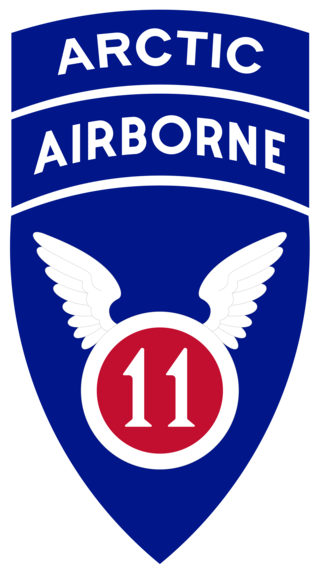
The 11th Airborne Division is a United States Army airborne formation based in Alaska.

The 13th Airborne Division was an airborne forces formation of division-size of the United States Army that was active during World War II. The division was commanded for most of its existence by Major General Elbridge G. Chapman. It was officially activated in the United States in August 1943 at Fort Bragg in North Carolina, remaining active until February 1946, however it never saw combat.

The 17th Airborne Division, "The Golden Talons", was an airborne infantry division of the United States Army during World War II, commanded by Major General William M. Miley.
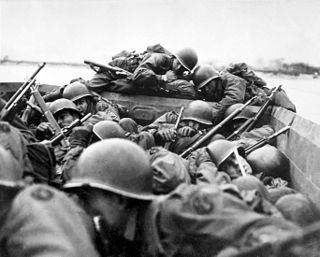
Operation Plunder was a military operation to cross the Rhine on the night of 23 March 1945, launched by the 21st Army Group under Field Marshal Bernard Montgomery. The crossing of the river was at Rees, Wesel, and south of the river Lippe by the British Second Army under Lieutenant General Miles Dempsey, and the United States Ninth Army under Lieutenant General William H. Simpson.

Operation Varsity was a successful airborne forces operation launched by Allied troops toward the end of World War II. Involving more than 16,000 paratroopers and several thousand aircraft, it is the largest airborne operation ever conducted on a single day and in one location.

The Oxfordshire and Buckinghamshire Light Infantry was a light infantry regiment of the British Army that existed from 1881 until 1958, serving in the Second Boer War, World War I and World War II.

Glider infantry was a type of airborne infantry in which soldiers and their equipment were inserted into enemy-controlled territory via military glider. Initially developed in the late 1930s by Germany, glider infantry units were used extensively during World War II but are no longer used by any modern military.
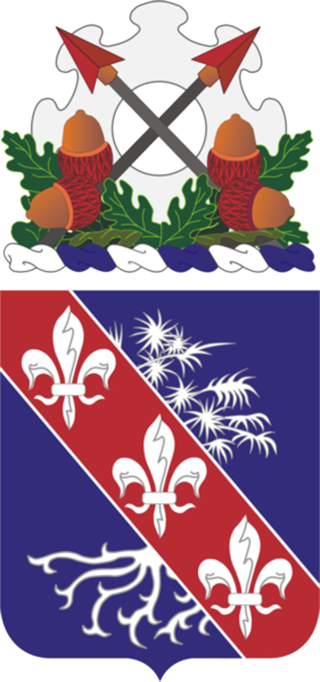
The 327th Infantry Regiment is an infantry regiment of the 101st Airborne Division of the United States Army. During World War II, the 327th was a glider-borne regiment of the 101st Airborne Division. It fought during World War I as part of the 82nd Division. It has also been deployed in the Vietnam War, Gulf War, and most recently to Iraq and Afghanistan. The song "Glider Rider" describes (humorously) some of the slights that glider-borne troops felt they received from the Army during World War II; though the regiment's public fame rose with the 1949 movie Battleground about the Siege of Bastogne in late 1944.
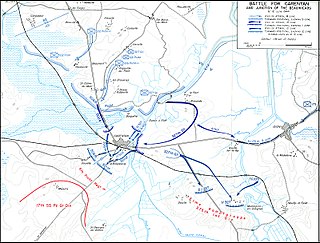
The Battle of Carentan was an engagement in World War II between airborne forces of the United States Army and the German Wehrmacht during the Battle of Normandy. The battle took place between 6 and 13 June 1944, on the approaches to and within the town of Carentan, France.

The 5th Parachute Brigade was an airborne forces formation of brigade strength, raised by the British Army during the Second World War. Created during 1943, the brigade was assigned to the 6th Airborne Division, serving alongside the 3rd Parachute Brigade and the 6th Airlanding Brigade.

American airborne landings in Normandy were a series of military operations carried by the United States as part of Operation Overlord, the invasion of Normandy by the Allies on June 6, 1944, during World War II. In the opening maneuver of the Normandy landings, about 13,100 American paratroopers from the 82nd and 101st Airborne Divisions, then 3,937 glider infantrymen, were dropped in Normandy via two parachute and six glider missions.

Mission Albany was a parachute combat assault at night by the U.S. 101st Airborne Division on June 6, 1944, part of the American airborne landings in Normandy during World War II. It was the opening step of Operation Neptune, the assault portion of the Allied invasion of Normandy, Operation Overlord. Five hours ahead of the D-Day landings, 6,928 paratroopers jumped from 443 C-47 Skytrain troop-carrier planes into the southeast corner of France's Cotentin Peninsula. The troops were meant to land in an area of roughly 15 square miles (39 km2), but were scattered by bad weather and German ground fire over an area twice as large, with four sticks dropped as far as 20 miles (32 km) away.
Clinton M. Hedrick was a United States Army soldier and a recipient of the United States military's highest decoration the Medal of Honor for his actions in World War II during Operation Varsity. Not long after his actions he died of his wounds.
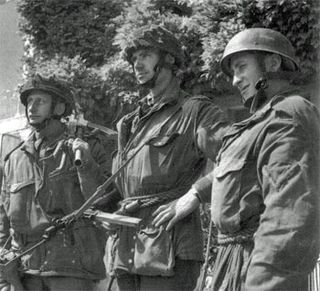
The 6th Airlanding Brigade was an airborne infantry brigade of the British Army during the Second World War. Created during May 1943, the brigade was composed of three glider infantry battalions and supporting units, and was assigned to the 6th Airborne Division, alongside the 3rd and 5th Parachute Brigades.

The 188th Glider Infantry Regiment was a regiment in the United States Army that was active during World War II. It was a part of the 11th Airborne Division during its entire existence.

The 13th (Lancashire) Parachute Battalion was an airborne infantry battalion of the Parachute Regiment, raised by the British Army during the Second World War. The battalion was formed in May 1943 by the conversion of the 2/4th Battalion, South Lancashire Regiment to parachute duties and was assigned to the 5th Parachute Brigade in the 6th Airborne Division.
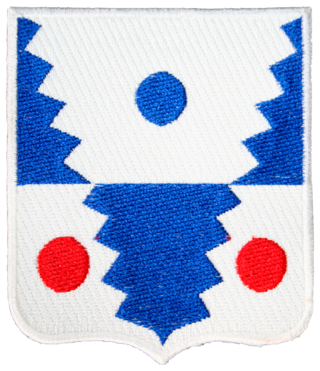
The 193d Glider Infantry Regiment was an airborne infantry regiment of the United States Army during World War II. It was part of the 17th Airborne Division and fought during the Battle of the Bulge.


















